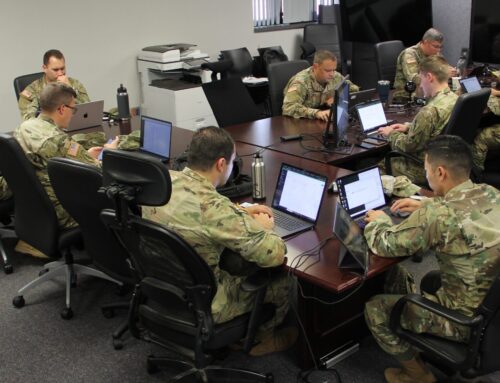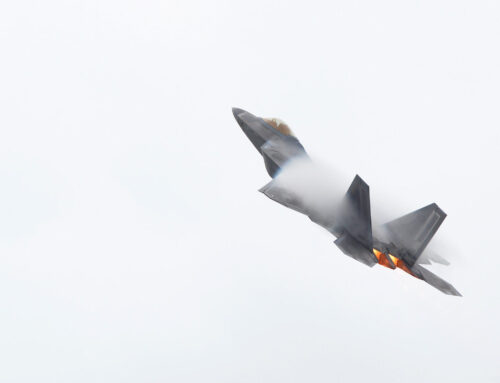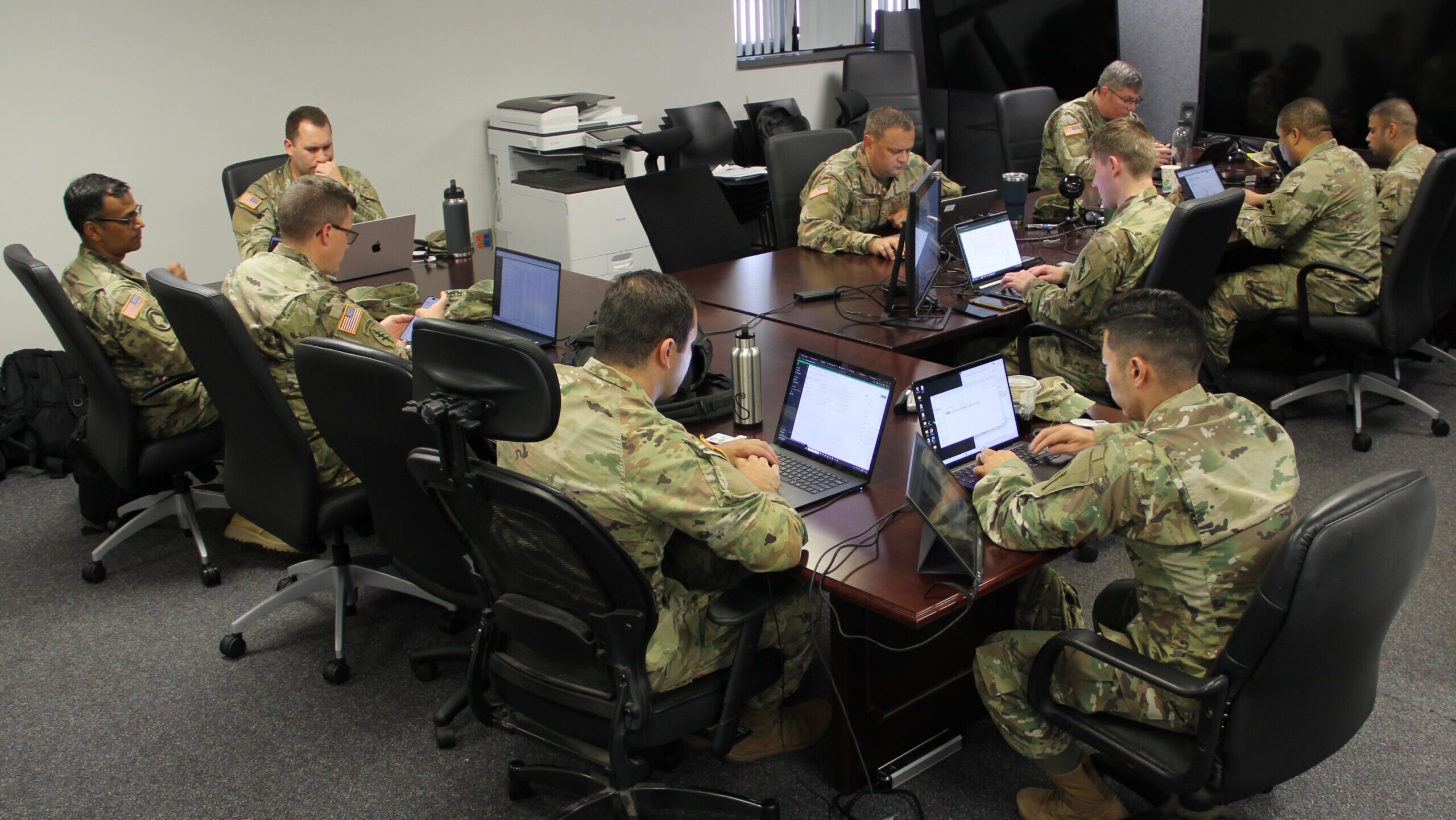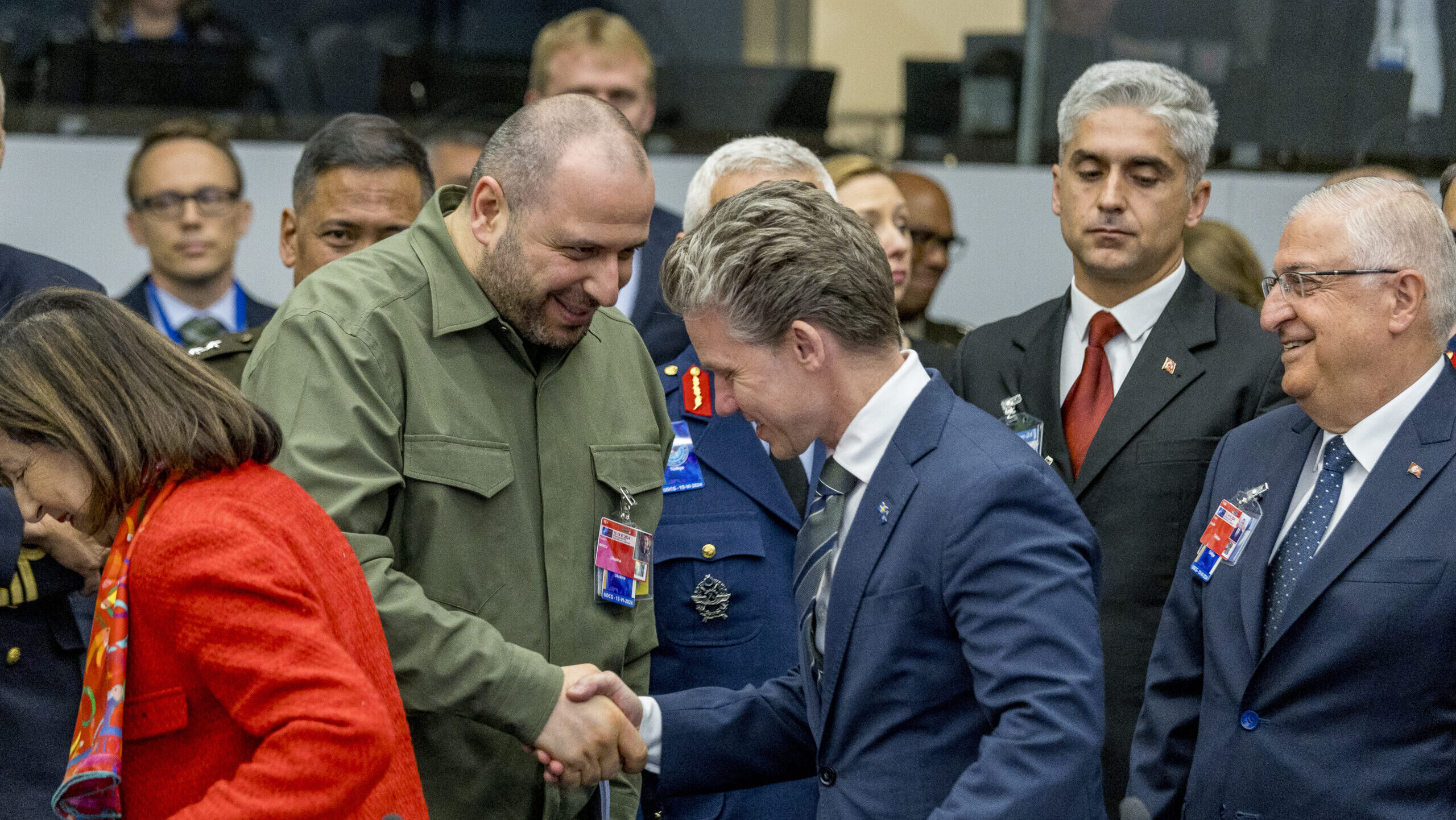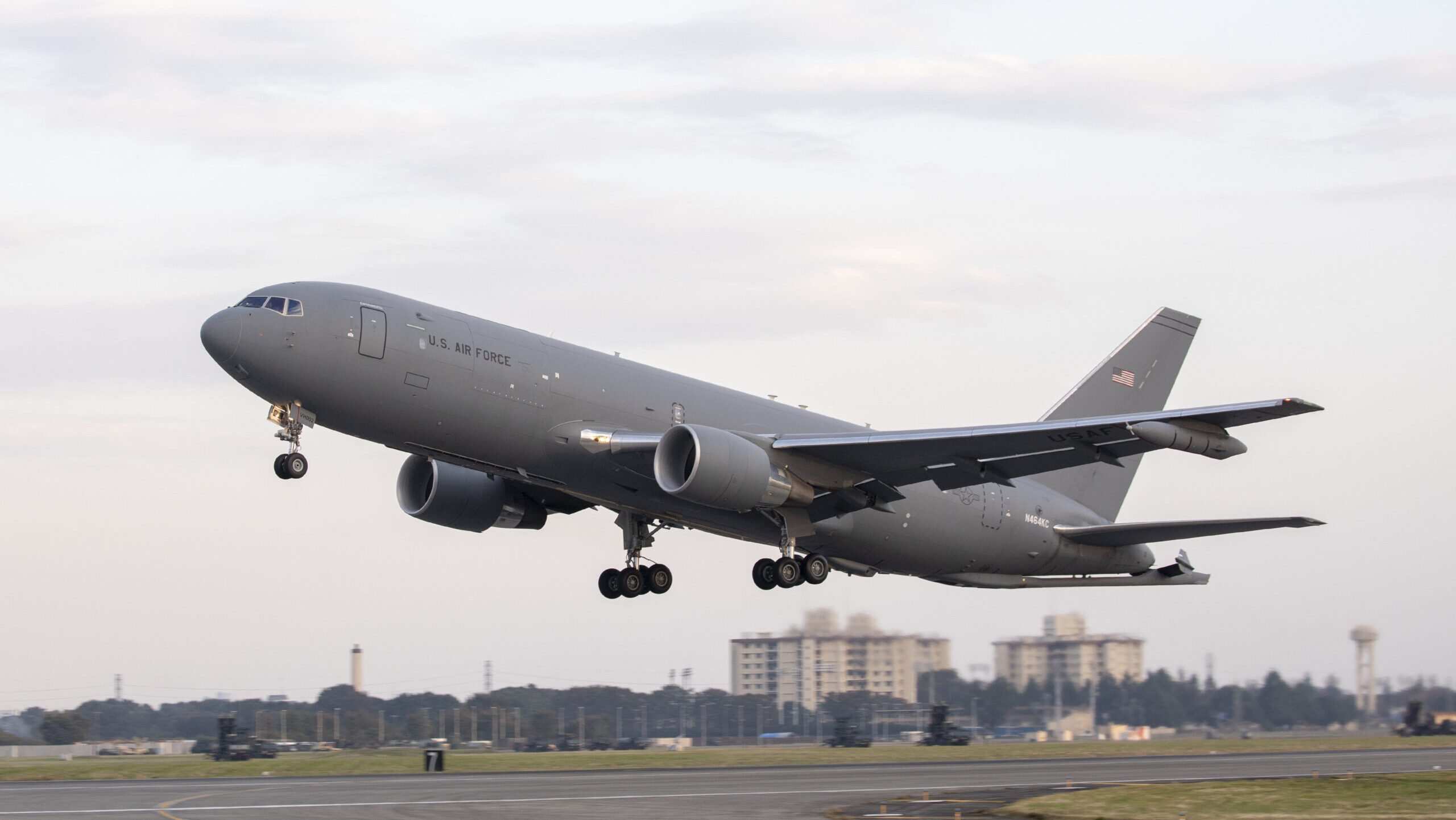The NCS Technologies division responsible for additive manufacturing is subject to the same quality controls as third parties. NCS Technologies photo.
The threats to maneuver-force ground vehicles and their crews today are in many ways akin to what platforms faced in Iraq and Afghanistan faced years ago. The need for mechanical systems to drive sensors and computers for command and control and situational awareness, for example, remains relevant today.
Back then, maneuver forces needed 360-degree cameras to help identify subtle changes in a given area, like a truck that wasn’t there the day before. The cameras required sophisticated data handling and storage systems that were stressed even under good conditions, as vehicles traversed rough terrain in all kinds of weather, with limited cooling and power, and perhaps with bombs exploding nearby.
In that environment, the systems also required filters to keep sand out of the ventilation, uninterruptible power supplies to prevent sudden shutdowns resulting in lost data – not uncommon on military vehicles – and removable data storage so the data collected by the vehicle can be shared with a command post.
Steve Stuck is vice president of the Appliance and Server Engineering Group at NCS Technologies.
“We designed several different iterations of that for a customer,” said Steve Stuck, Vice President of the Appliance and Server Engineering Group at NCS Technologies, which designs and builds custom computing solutions for mobile military platforms. “They used them in the field in Afghanistan and came back to us with lessons learned. We completely re-architected the design based on their feedback.”
Subsequent versions proved resilient against just about anything short of physical destruction of the vehicle, Stuck says.
The camera system is but one example of the type of requests NCS Technologies routinely fields today from its military customers trying to address threat scenarios across European, Indo-Pacific, and Middle East battlespace. Oftentimes, these customers know what capabilities they’re looking for and turn to NCS Technologies to bring them to fruition.”
NCS does this in a variety of inventive ways.
Custom computing with a COTS twist
Modern military platforms rely on advanced computing systems that must be protected against natural elements, extreme temperatures, and salt water, as well as decidedly human threats ranging from kinetics to supply chain sabotage. Ground vehicles are becoming smaller, more autonomous and mobile, amplifying the challenge.
There are no one-size-fits-all solutions. Different platforms have varied missions, not to mention their own size, weight, power and cost (SWAP-C) requirements. In addition, data processing and storage systems must be compatible with other onboard electronics with which they connect – whether by design or not.
The company is often contracted to do technology insertion into legacy platforms, with the onboard electronics to which it must interface sometimes many years behind mainstream – necessitating some creativity in designing leading edge computer systems that can communicate with legacy systems.
Checking all necessary boxes in an affordable way is complicated, but that’s what NCS Technologies regularly accomplishes with its builds.
Ronald Keene is vice president of military business development for NCS Technologies.
“We’re dedicated to providing solutions that deliver performance, security, and reliability for every scenario that our customers put in front of us; that’s all,” said Ronald Keene, the company’s vice president of military business development.
NCS packages commercial off-the-shelf (COTS) computing and storage components to fit within the space and power constraints of a given platform, be it a ship or combat vehicle, and ruggedizes them against all operational scenarios. The company relies on model-based systems engineering, additive manufacturing, and inventiveness to do this.
“Almost everything we develop requires some degree of engineering, even if it’s a COTS offering; nobody wants something exactly the way they see it on the website,” Stuck noted. “Sometimes that’s easy, sometimes that’s harder.”
Take, for example, the often-complex network of fans, ducts, and vents needed to prevent compute systems from overheating. Typically, fans draw and expel air from opposite sides of a system, but sometimes a customer needs customization for a specific vehicle integration.
“A requirement came to us recently where airflow had to come from adjoining sides so we’re having to design the system in a very unconventional way,” Stuck said. “We’re using off-the-shelf technology, but you don’t find systems where airflow comes in the side and goes out the back. It doesn’t exist in a normal environment.”
That said, NCS is careful not to over-customize. “We don’t want to add cost by driving a customization that’s not necessary for the use case,” Keene said.
The role of additive manufacturing
Not everything can be bought off the shelf, and this is especially true of the brackets and other hardware necessary to house, support, and protect sensitive computing systems customized for mobile military platforms and vessels. This is where NCS’s in-house additive manufacturing capability, colloquially known as 3D printing, comes into play.
During the digital design and engineering process, NCS uses additive manufacturing to quickly build prototype component parts to see what works and what doesn’t. Having the additive manufacturing in house means that engineers can design several notional designs, print all three of them and see which one works best and move on. Even though these parts are manufactured in-house, the NCS division responsible for additive manufacturing is subject to the same quality controls as third parties.
Additive manufacturing is also a valuable tool in making modifications relatively late in the design and production process. Stuck cited an example of this where a single semiconductor chip was overheating and the ability to cool it by increasing fan speed was found to increase Airborne Noise (ABN) and Structure-borne Noise (SBN) beyond allowable Environmental Qualification Testing (EQT) tolerances, resulting in a bit of a “Catch-22”.
A tight schedule precluded a system redesign, so NCS engineers designed and additively manufactured an unusually shaped plenum – a chamber where a substance is collected for distribution – that drew air from a specific spot and directed it toward the chip. Problem solved.
Structured for success
In an era where many companies are embracing vertical integration, NCS’s design and development organization has a horizontal structure that strings together disciplines including design, systems engineering, and manufacturing to tackle the complex challenges of SWAP-C. The company’s customer interfacing team, meanwhile, has deep expertise in specific mission areas.
“We help drive the requirements working with our product management and engineering experts to devise an offering that specifically meets the business use case that the customer’s looking for,” Stuck says.
The NCS engineering-design team in one area interfaces directly to the manufacturing engineering team to ensure that a specially designed product can be manufactured at scale. For example, when the engineering team designs a system to optimize airflow while minimizing costs, the manufacturing engineering team weighs in to ensure it can be built quickly and affordably, a process that can involve some compromises.
This horizontal back-and-forth manufacturing approach differs from siloed structures where engineering teams handoff designs to a production team that only then figures out how to build it. Instead of subcontracting for hardware fabrication and waiting for parts to be built, delivered, then tested for shock and vibration, and properly integrated, NCS keeps the entire process in-house, speeding design iteration, manufacturing, and quality control.
This approach also improves sustainment. NCS’ field products have an expected lifecycle as long as 8-10 years, so the company designs products with LRUs (line replaceable units) in mind to speed up field service should it become necessary, and to also enhance its customer’s support experience with a comprehensive sustainment offering.
NCS Technologies packages COTS computing and storage components to fit within the space and power constraints of a given platform, be it a ship or combat vehicle, and ruggedizes them against all operational scenarios. NCS Technologies photo.
Resilience testing and supply chain security
Like any contractor, NCS wants to ship its products with a high confidence level that they will pass muster with the customer. The Navy, for example, requires that machinery, electronics, and structures to be deployed on ships pass MIL-DTL-901E Floating Shock Testing, also known as barge testing. This entails placing items on a covered barge in a deep-water pond that then is exposed to explosions at various depths and distances to ensure they can withstand the rigors of combat.
NCS has in-house shock and vibration test equipment that can emulate the effects of barge testing. “Going to the barge, which is a required step in qualifying products or solutions for the Navy, is expensive and takes time to schedule,” Stuck says. “The last thing you want to do is go to the barge and fail.”
Confidence in systems also applies to the supply chain and security of the industrial base. Combat-bound computer systems face threats before they reach the field in the form of counterfeit parts or chips deliberately infected with spyware or malware. To address this, NCS has partnered with another innovative Northern Virginia company to identify and counter supply chain threats by isolating and monitoring a device’s electromagnetic emissions. The resulting signatures are measured against an established baseline, using patented machine learning capabilities to identify differences that might be indicative of counterfeiting or malware.
“It’s powerful,” Stuck says. “We’ve used this in our supply chain environment to make sure that a board that we’re using is what it’s supposed to be.”
It’s one more layer of resiliency that NCS Technologies brings to its military customers and OEMs.



